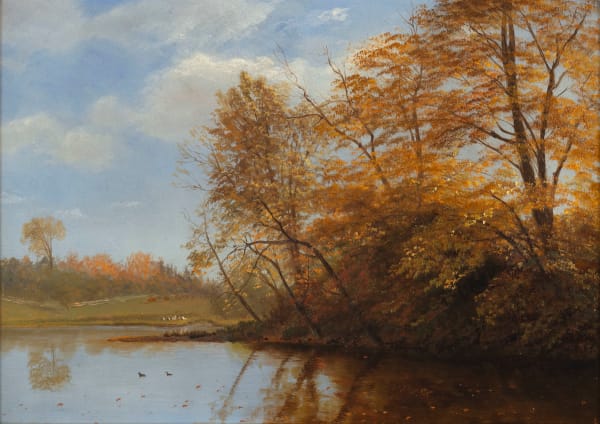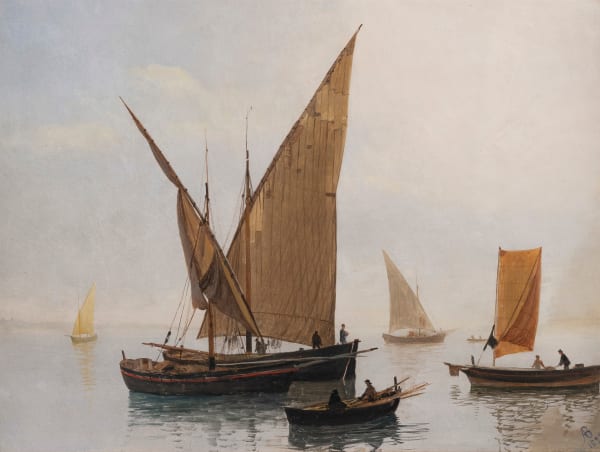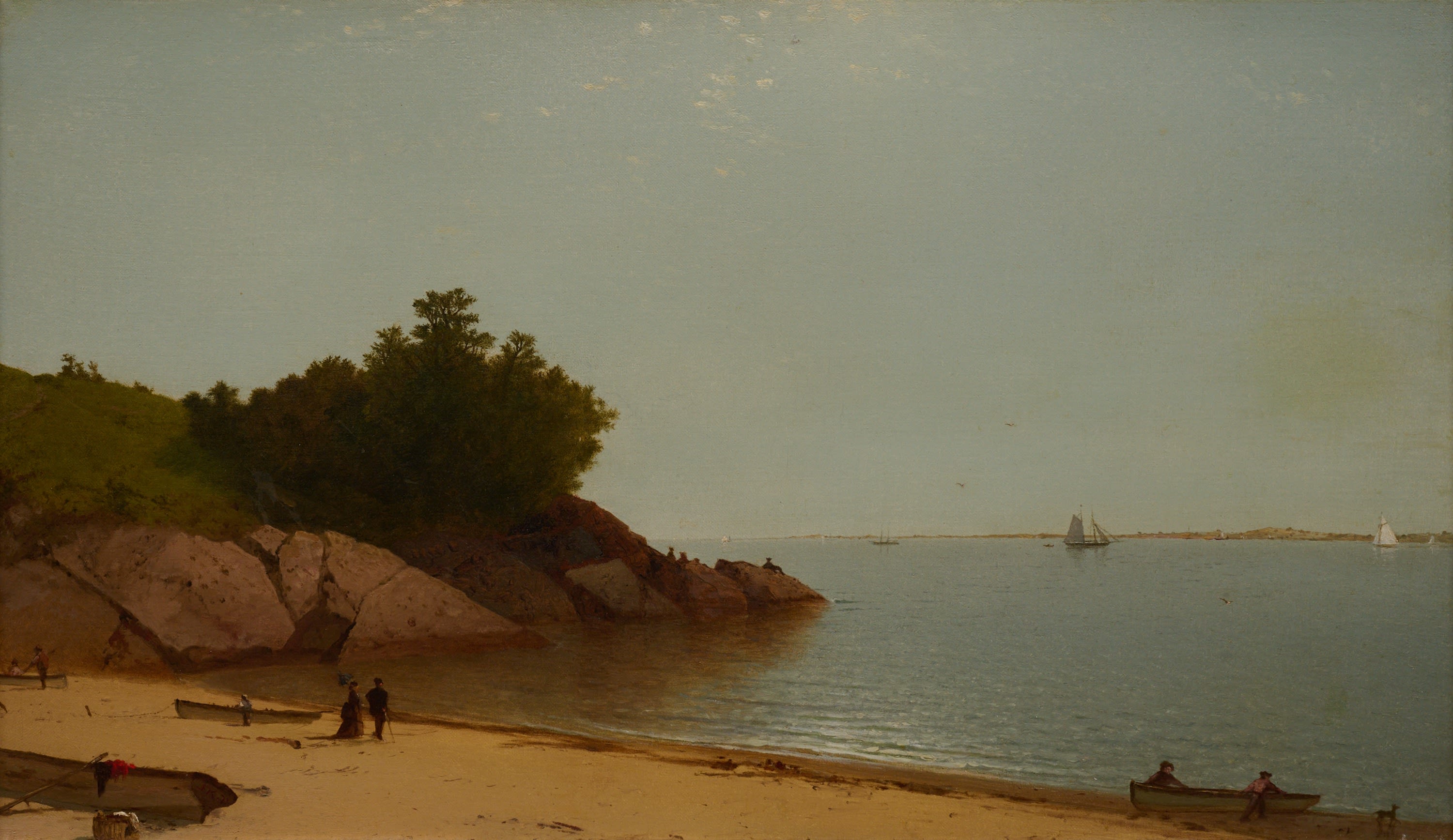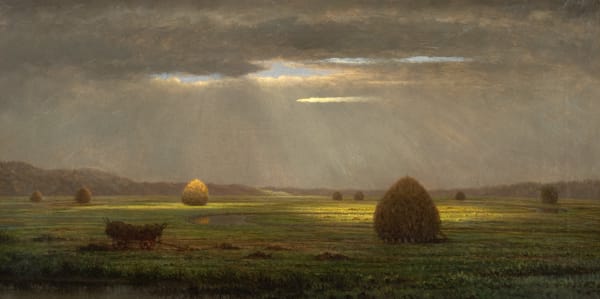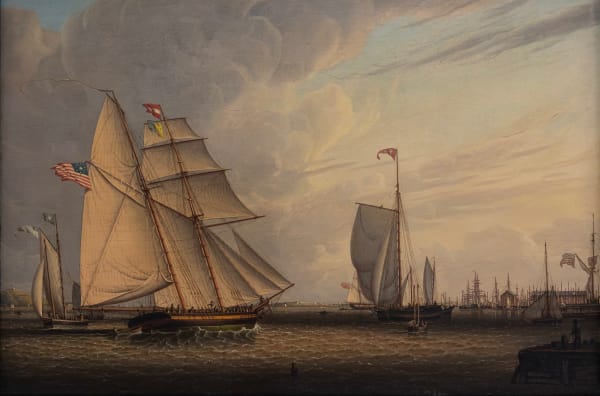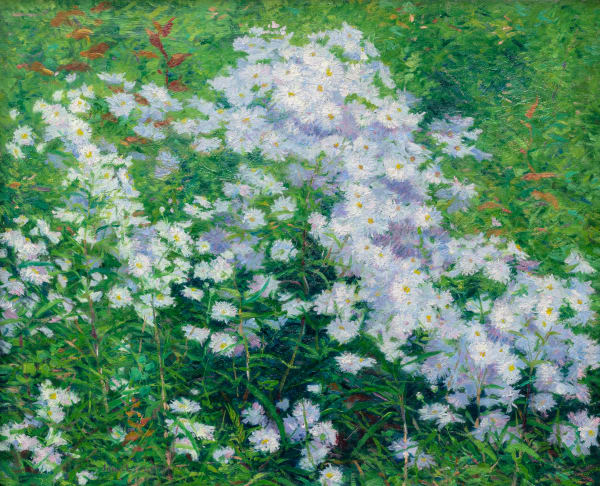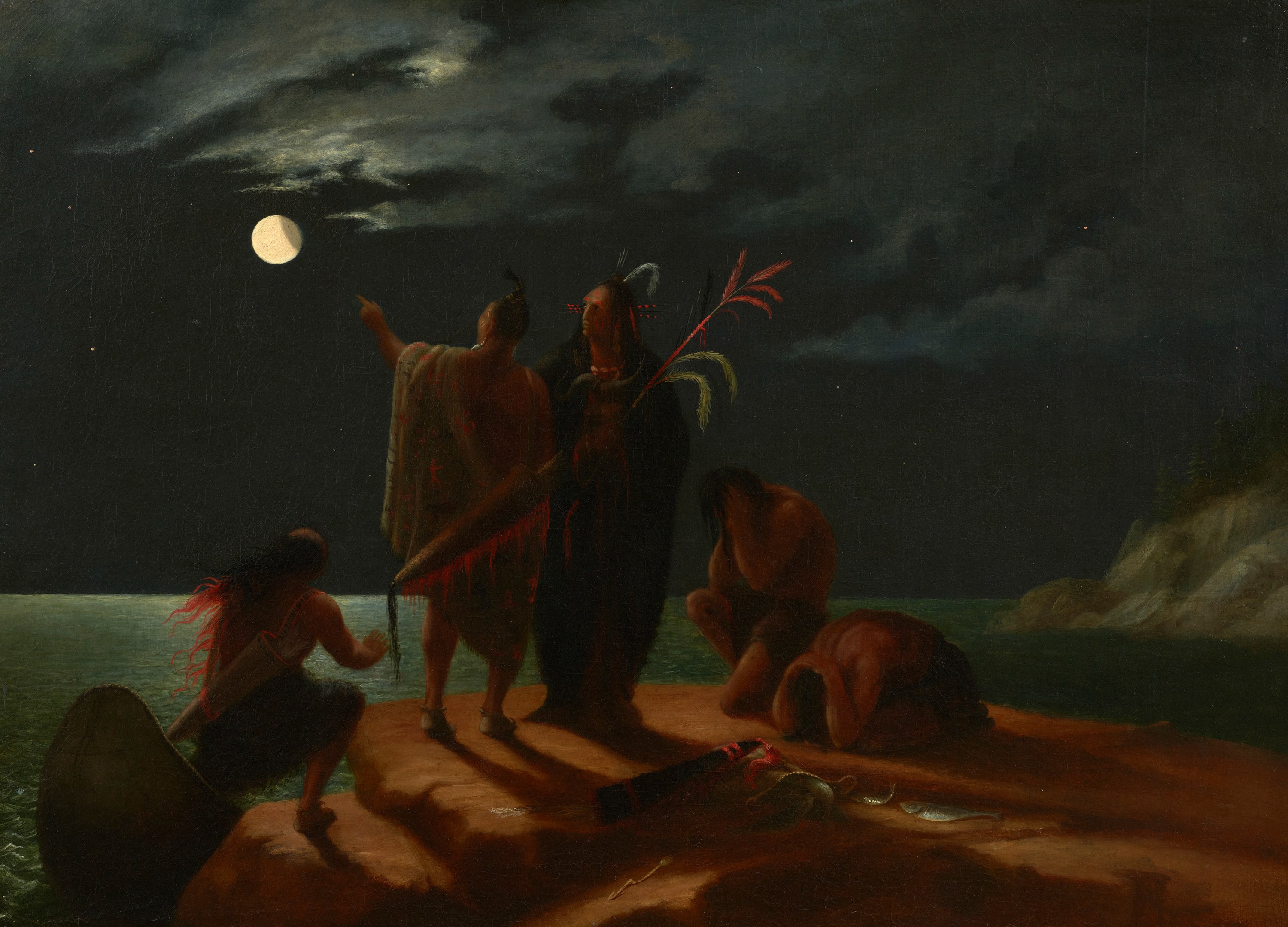-

-
-
 John Frederick Kensett (1816-1872)A Quiet Day on the Beverly Shore, Magnolia, Massachusetts, 1871Initialed and dated at lower left: JFK '71Oil on canvas14 x 24 inches
John Frederick Kensett (1816-1872)A Quiet Day on the Beverly Shore, Magnolia, Massachusetts, 1871Initialed and dated at lower left: JFK '71Oil on canvas14 x 24 inches
35.6 x 61 cmJohn Frederick Kensett's A Quiet Day on the Beverly Shore, Magnolia, Massachusetts, 1871, stands as one of the masterworks of his mature career, displaying the reductive elegance and exquisite treatment of light and atmosphere for which he is celebrated. Born in 1815, Kensett started his career as an engraver in New Haven, Connecticut, before experimenting with landscape painting to advance his career at the suggestion of his friend, John Casilear. Kensett traveled to Europe to continue his education like many Hudson River School artists and, following his return to America in 1847, devoted his practice to capturing scenic views throughout New York and New England, ultimately becoming one of the leading American painters of the Civil War era.
-
-
 Frederic Edwin Church (1826-1900)Icebergs and Wreck in Sunset, c. 1860Oil on paperboard mounted on canvas8¼ x 12¼ inches
Frederic Edwin Church (1826-1900)Icebergs and Wreck in Sunset, c. 1860Oil on paperboard mounted on canvas8¼ x 12¼ inches
21 x 31.1 cmON RESERVEFrederic Church often traveled great distances in search of new material for his art and headed to Labrador in 1859 to tap into the public’s fascination with polar exploration. Church had recently completed the monumental Heart of the Andes (1859; Metropolitan Museum of Art, New York) devoted South American imagery, and he looked to the Arctic for the subject of his next great picture. Church’s well-publicized journey resulted in close to one hundred field and studio sketches but it wasn’t until a year later that this material yielded The Icebergs (1861, Dallas Museum of Art). -
 Alfred T. Bricher (1837-1908)Sunset at Narragansett, 1875Signed and dated at lower left: AT Bricher . / 75Watercolor and gouache on paper12 x 24 inches
Alfred T. Bricher (1837-1908)Sunset at Narragansett, 1875Signed and dated at lower left: AT Bricher . / 75Watercolor and gouache on paper12 x 24 inches
30.5 x 61 cmON RESERVESunset at Narragansett exemplifies Bricher's mature style. The painting excels in its subtle composition and masterful treatment of light. Upon close observation, sails dot a horizon dominated by a meticulous harmony of natural elements. Reflecting the philosophical influences of John Ruskin and Ralph Waldo Emerson, Bricher renders the sky with careful, unadorned precision, his brushstrokes hinting at a proto-Impressionist sensibility that was revolutionary for its time. The work's soft shoreline and cunning diffusion of sunset light reward careful observation, making it not just a painting, but an invitation to contemplative appreciation of nature's immediate beauty.
-
-
-
-

-

-

William Rimmer
Indians Experiencing a Lunar Eclipse, c. 1848-50William Rimmer (1816-1879)Indians Experiencing a Lunar Eclipse, c. 1848-50Oil on canvas26 1/4 x 36 inches
66.7 x 91.4 cmA contemporary of George Caleb Bingham and Martin Johnson Heade, William Rimmer is regarded as one of the most talented and imaginative artists of the 19th century yet limited primary materials survive about his life and career. A trained doctor with wide-ranging artistic, literary and scientific interests, he applied himself to painting, life drawing and sculpture, and was well-known as a teacher of anatomy. His works explore allegorical, literary and historical themes that he often used as a metaphor to address the most serious issues of his time. The c. 1850 date for the painting has been established by the Boston canvas seller’s stencil on the verso, and Rimmer would have lived 15 miles south of the city at the time in the town of Randolph, Massachusetts. -
Jean-Baptiste Carpeaux (1827-1875)Why Born Enslaved!, 1868 (1872)Inscribed and dated: JB Carpeaux 1872; inscribed: POURQUOI!NAITRE!ESCLAVE!; stamped: PROPRIETE CARPEAUX on an eagle cachet; stamped: ATELIER & DEPOT / 74 RUE BOILEAU / AUTEUIL PARISTerracotta23½ x 19 x 12 inches
59.7 x 48.3 x 30.5 cm -
For additional information about Masterworks of the 19th Century or any of the works presented, please be in touch with Alana Ricca at alana@schoelkopfgallery.com or (212) 879 - 8815
Masterworks of the Nineteenth Century brings together sixteen works in an intimate survey of American art from 1829 to 1904. Drawn from distinguished private collections including the family of Albert Bierstadt, the Estate of Walter Goldfarb, and the Kathleen Kennedy and Frank Marshall Collection, this curated presentation of paintings, sculpture, and works on paper invites viewers to consider nineteenth-century examples of landscape, portraiture, historical scenes, and trompe-l’oeil subjects. Highlights range from an elegant view of the Beverly Shore in Massachusetts by John Frederick Kensett to an early Frederic Remington grisaille of the American West.


